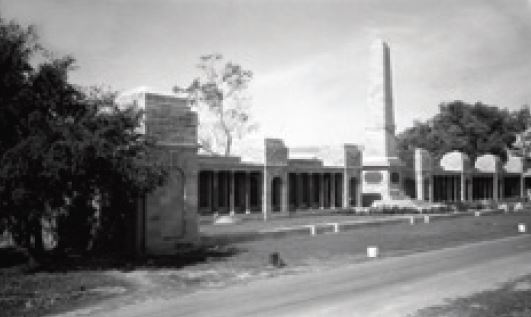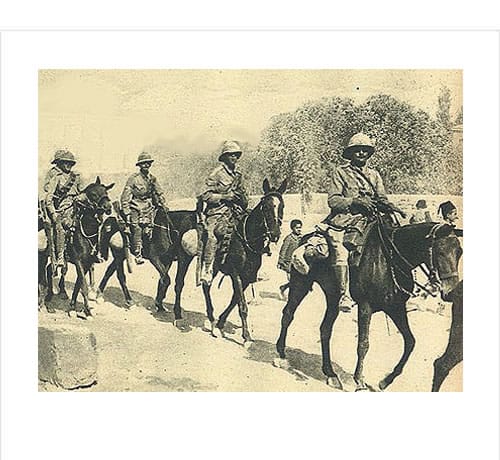by Jason O’Neill
Remembrance Sunday 2016 gave me the single honour and privilege to remember our fallen comrades who gave their lives in the action of Khan Baghdadi (March 1918) and the Battle of Sharqat in October of that same year.
The 7th (Queen’s Own) Hussars who had been stationed in Bangalore at the start of the First World War landed in Mesopotamia as part of the 11th Indian Cavalry Brigade in November 1917. The Regiment played a large part in the bringing down of the Ottoman Empire during the Mesopotamian Campaign of World War I and thus an end to the conflict, resulting in the signing of the Armistice of Mudros.
Now forming part of the 11th Indian Cavalry Brigades and led by Sir Alexander Cobbe, they left Baghdad on October 23 1918.
In just 39 hours they covered 120 kilometres, this being no mean feat as even today there are few well-constructed roads in that region, to the Little Zab River, where the ‘Dicle Group’ of the Ottoman Sixth Army, led by Ismail Hakkı Bey, commander of the Ottoman 14th Division, was awaiting them.
Seeing his army’s rear threatened, smail Hakkı Bey withdrew another 100 kilometres to the north to Sharqat, where Cobbe attacked him on October 29 1918, sending the 11th Cavalry Brigade to pin the Ottoman front while the 17th Division came up to support them. The 17th was delayed in arriving, and the cavalry was shelled by Ottoman guns overnight.
In the morning the 13th Hussars charged the hill where the guns were, and made a dismounted charge up it with fixed bayonets, successfully capturing the guns.
On November 1, 1918, Mosul was peacefully occupied by the 7th and 11th Indian cavalry brigades, after the British forces ignored the request of the Ottoman Commander-in-chief, Ali Ihsan (Sâbis), to withdraw to the positions they had held at the armistice.

The Basra Memorial is now located on the western edge of the Az Zubayr oilfield approximately 30 kilometres west of Basra.
Until 1997 the Basra Memorial was located on the main quay of the naval dockyard at Maqil, on the western bank of the Shatt-al-Arab, approximately 8 kilometres north of Basra.
Due to the sensitivity of the site, the Memorial was moved by presidential decree during the Saddam Hussein era. The move, carried out by the authorities in Iraq, involved a considerable amount of manpower, transport costs and sheer engineering on their part, and the Memorial has been re-erected in its entirety.
The names of the fallen are listed by Regiment in seniority and by rank and name, an honour extended only to the British, the Indians who fell are only listed by the numbers who died, which range in the thousands.
Visiting the site presents a number of logistical problems, Iraq is still very unstable and the Foreign Office still recommend essential travel only, and a letter of invitation is required to obtain a visa, that said the Shia Baswari are most welcoming and generous of spirit towards the British, many remember The Queen’s Royal Hussars from their Telic Tours, in fact, I still work with Qahtan (Danny) Hafaz, who served with the unit as an interpreter during their tour of Basra Iraq.
7th (Queen’s Own) Hussars Roll of Honour – Mesopotamia Campaign
Capt Hallowes JC
Sgt Cowie G
Sgt Radford G
Sgt Squibb WJ
Cpl Crutchley HM
Cpl Dickins WH
LCpl Booth ADW
LCpl Poole TG
LCpl Richards RE
LCpl Smith JJ
Tpr Burbage JH
Tpr Cunningham JH
Tpr Elson WR
Tpr Kelble A
Tpr McTighe P
Tpr Nisbet RCM
Tpr Rea J
Tpr Stubbings R
Tpr Vitler T
8th (Kings Royal Irish) Hussars Roll of Honour – Mesopotamia Campaign
2Lt Dudgeon FC
Article first published in “Crossbelts 2016”.


